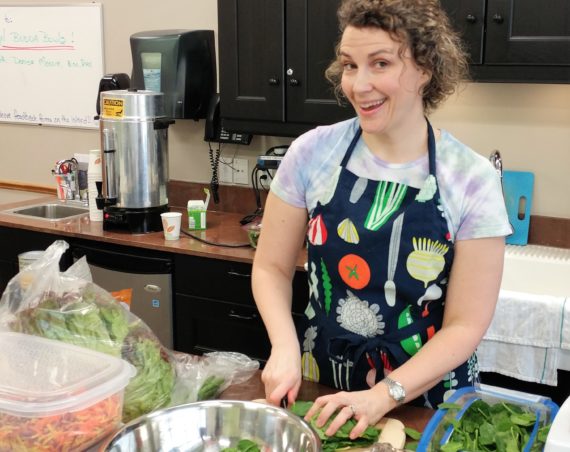Tim Sotoadeh is the founder of a bone broth company named Broya. Tim started making bone broth after he began sourcing high-quality meats to eat. He was always ending up with the bones but didn’t begin making bone broth until a few of his athletic friends started to tell him about the benefits of it. After making it consistently every day for 2 weeks, he was hooked, and Broya was born. Today, Broya makes bone broth made with organic chicken and antibiotic and hormone-free beef.
We chatted with Tim about his inspiration, his favorite ways to enjoy bone broth and how it can improve your health.
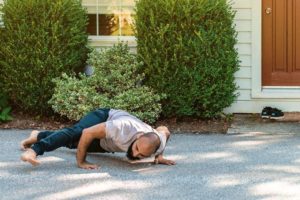
WEHL: Tell us about yourself and why you became interested in natural wellness.
TS: Since I was a young kid I was always into being the best version of myself and I recognized that I could control that a great deal just by living life with a health focus as a foundational element. I grew up playing competitive hockey and soccer, and during high school I became a gym freak. I was bench pressing over 300 pounds (some people still don’t believe that about me because I’m not a huge guy, but I had some weird pushing power). Right after university, I discovered a movement teacher named Ido Portal. I went to one of his workshops in Ottawa in 2012 and from that point on I became obsessed with movement and in particular, the way Ido conveyed the potential for adaptability within our bodies. And not something esoteric or just for the ‘talented’ folks; his students were regular people with lots of injuries and they were showing incredible results through hard work and the right process. Over the next 5 years I traveled to Europe and Asia to attend his workshops and movement camps and it’s become a massive part of my life. Ido taught me about the generalist approach to movement, to taking care of joints, and he introduced me to movement patterns I had never thought I could do in this lifetime. I learned how to do a 60 second freestanding handstand in 1 year after meeting Ido and that was coming from a guy with incredibly tight shoulders and never once attempting a handstand. However, it is much more than handstands and backflips — Ido teaches a philosophy and a lifestyle surrounding movement that our modern world has lost. As a society, we rarely move our bodies and after spending some time learning from Ido, it made me realize how absurd that is. Movement is now so ingrained in my life that I can’t stop thinking about it — I regularly get up from my laptop after working for an hour and jump into a handstand or do a few pull ups. It feels weird to stay in a single position for an extended period of time — my body will not let me do that anymore.
WEHL: What’s your philosophy on wellness?
TS: Good question. For me, it’s all about self love. By that, I don’t mean looking at yourself in the mirror and telling yourself you love yourself every day, but more about making choices in your life that are consistent with that. That means eating good nutritious food, having restful sleeps, moving your body, connecting with the people you love, and some type of mindfulness practice as well. I think meditation is maybe one of the most underutilized wellness tools in the Western world — and it’s completely free.
WEHL: How did you get inspired by bone broth?
TS: I started sourcing high-quality meat from local farmers back in 2011. I would drive 2 hours out of the city to the farm and pick up a large quantity of meat. I’d usually buy half a cow each time I made the trip. I would store it in my deep freezer at home and it would last me a while. Because I was buying half a cow, I would literally get half of the cow; that included the organs and bones. I didn’t really know what to do with the bones and I didn’t know much about bone broth, but around 2015 I had a bunch of my athletic friends tell me that they were drinking bone broth and eating organ meat every day. I thought it was crazy, so naturally, I wanted to give it a try. Plus, I had all these bones stocked up in my freezer. I made broth consistently for 2 straight weeks and that’s all the animal protein I consumed during that time. It transformed my health completely; I was sleeping way better, I lost about 5-10 pounds of weight that I really didn’t need on my body, and my energy levels were a lot higher. That was all I needed to feel. I’ve been drinking broth pretty much every day since then.
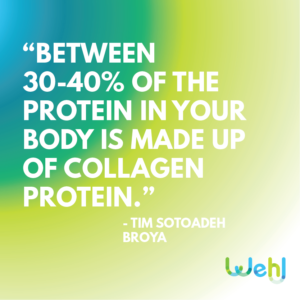
WEHL: What’s the difference between bone broth and stock?
TS: The major difference is that bone broth is cooked for a much longer period of time than a stock. Our bone broth is cooked for 24 hours and this allows the extraction of all the great nutrients and minerals to be found in the final product. Collagen protein is the biggest component that we find in bone broth, which is what makes this food so nourishing. We can’t find naturally occurring collagen in many foods and when you do it’s not very abundant. This is why, in my opinion, bone broth can be one of the most healing foods on the planet. Between 30-40% of the protein in your body is made up of collagen protein; that includes your skin, hair, nails, joints, tendons, and all of the cartilage surrounding your bones. It would make sense that we should be getting a good source of this type of protein.
WEHL: How can bone broth improve your health?
TS: I think it’s different for everyone and where they’re at on their journey towards health. For me personally, it has drastically improved my digestion, it keeps me satiated and prevents overeating, it’s given me better sleeps, and I feel more energy throughout the day since I started consuming it daily. A lot of athletes use bone broth to keep their joints healthy and I can attest to that as well.
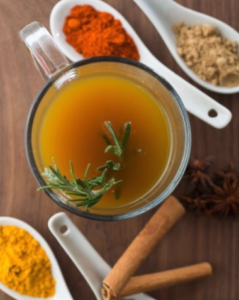 WEHL: How did you come up with your recipe for your bone broth?
WEHL: How did you come up with your recipe for your bone broth?
TS: I worked in partnership with a food lab to develop the recipe. I gave them a fairly standard recipe to start with and we worked together for several months to come up with a recipe that we thought would appeal to most people we think would drink the product. We’ve had several iterations since the first recipe and I would say we’re still in development and always trying new things. We’ll actually be coming out with a couple new flavors in a couple months so that’s going to be exciting.
WEHL: Do most people drink it straight? Or make it into a meal?
TS: Most people use our product as a drink. They tend to warm it up and drink it like a tea. We have a fairly flavorful broth, so it’s best used as a drink. However, you could make some delicious recipes with rice, noodles, and vegetable stir frys as well, which some people tend to do.
WEHL: What’s your favorite way to enhance Broya at home?
TS: My favorite thing to do is to make a Bulletproof style Broya. Heat it up, put in some grass fed butter and MCT oil and blend it up. You get a nice frothy broth out of it with some amazing fats.
WEHL: If you make bone broth at home, what are the best bones to use? Do you have a recipe that you’d like to share?
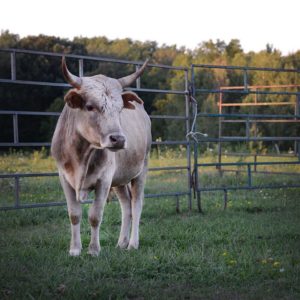
TS: I still make my own broth at home and I’m usually using beef bones. It’s more a convenience thing than anything. I get some bison, venison, or elk bones at times, but that’s rare. I’m not particularly picky about the bones as long as they’re high quality. My recipe is simple – bones, apple cider vinegar, and sea salt. I know, it’s underwhelming coming from the broth guy, but there’s a reason for it. Firstly, the more other stuff you put in the slow cooker (i.e. vegetables/spices), the less room you have for water (i.e. broth). I prefer to replace the vegetables in a regular broth recipe and put more bones for a more collagen-rich broth. Secondly, I like to make my broth as bland as possible so that I can spice it any way I like later on. I’ve done spicy, savoury, and sweet broth coconut milk lattes. The possibilities are endless.
WEHL: Do you get the same health benefits from using cooked bones vs. raw?
TS: Yes. I’m not a scientist, but I’ve spoken to a meat scientist about this and he said it doesn’t make much of a difference whether you cook the bones or not. Some people say cooking the bones makes the broth taste better, so I decided to test a batch side by side with cooked bones vs. raw bones and I didn’t notice any difference.
WEHL: Do you have any tips for someone who wants to start incorporating bone broth into their lifestyle?
TS: I would encourage people to make bone broth at home if they can. I know it could be a lot of work to get a slow cooker, source good quality bones, find a place to store the bones, then go through the whole cooking process, but once you get the process down a few times, it becomes part of your routine. If that’s still way too annoying, then I’d recommend ordering some of our product online and give it a shot for a couple weeks. Have 1 bottle a day and see how it makes you feel.
TELL US: Have you made your own bone broth? What’s your favorite recipe?
Connect with Tim:
- Web: www.broyaliving.com
- Email: [email protected]
We invite you to join our all-in-one healthy lifestyle app at Wehl.com!


